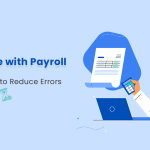In conclusion, HR software offers a wide range of benefits for organizations seeking to improve HR operations, increase efficiency, and enhance employee engagement. By carefully evaluating your organization’s specific needs, assessing the available features, and considering scalability, customization, and cost, you can select the best HR software solution to drive success. Moreover, taking the time to involve key stakeholders, ensure data security, and provide thorough training will set the stage for a successful implementation. Ultimately, investing in the right HR software will not only streamline HR processes but also empower your organization to achieve its long-term goals.
Assessing Your Organization’s Specific Needs
To begin with, the first step in selecting the right HR software is conducting a thorough assessment of your organization’s specific needs. Factors such as company size, industry-specific requirements, budget constraints, and current HR processes should be carefully evaluated. For example, a small startup may need a more simplified solution, while a large corporation might require more robust features, such as talent acquisition and succession planning tools. By understanding these factors, you can better identify software solutions that align with your operational objectives.
Evaluating Features and Functionality
Next, it is important to thoroughly evaluate the features and functionality offered by various HR software solutions. Key features to consider include payroll processing, recruitment management, time and attendance tracking, performance evaluations, and reporting capabilities. Additionally, ease of use is a critical factor to ensure successful adoption within your organization. It is essential to choose software that has an intuitive interface and provides a seamless user experience to guarantee that HR staff and employees can easily navigate and utilize the system.
Ensuring Scalability for Future Growth
Moreover, selecting an HR software solution that is scalable is critical for organizations with plans for expansion. As your workforce grows and your business evolves, the software must be able to adapt to increased workloads and user capacity. Therefore, choose a solution that can scale with your organization’s future needs, ensuring long-term sustainability and operational efficiency.
Customization and Flexibility
Additionally, HR software should offer flexibility and customization to adapt to your organization’s unique workflows and preferences. Customizable features, such as configurable workflows, dashboards, and reporting tools, are invaluable for tailoring the software to meet your specific operational requirements. In this way, businesses can avoid the need for costly and time-consuming custom development while still benefiting from a solution that addresses their individual needs.
Considering Total Cost of Ownership
Finally, while cost is an important consideration, it is essential not to focus solely on the initial purchase price. Instead, companies should evaluate the total cost of ownership, which includes implementation, training, support, and ongoing maintenance fees. Comparing pricing plans, subscription models, and return on investment (ROI) is crucial for selecting a solution that not only fits within your budget but also delivers long-term value. A well-chosen HR software solution can offer significant cost savings through improved efficiency, better compliance, and enhanced employee satisfaction.
Prioritizing User Experience and Training
In addition to considering features, it is essential to prioritize user experience and training during the selection process. While HR software can offer a wide array of advanced functionalities, these are only beneficial if your team is able to use them effectively. Therefore, you should assess whether the software provider offers sufficient training resources such as video tutorials, live demos, and customer support to ensure a smooth onboarding process. Moreover, intuitive interfaces and ease of use are key factors that directly affect user adoption rates. For instance, a system that requires minimal training will allow HR teams to quickly integrate the solution into their daily workflows, ensuring faster return on investment (ROI).
Focusing on Data Security and Compliance
Furthermore, in today’s data-driven business environment, ensuring robust data security and compliance with regulatory standards is crucial. HR software stores sensitive employee data, such as personal identification information, salary details, and performance records, which makes it a prime target for cyber threats. Thus, it is vital to choose a solution that offers strong encryption, regular security updates, and features such as multi-factor authentication. Additionally, compliance with regulations such as GDPR or local labor laws is equally important. Many HR software solutions provide built-in compliance tools that help your organization avoid costly fines and legal issues. Therefore, prioritizing data protection and legal compliance can help safeguard your organization against potential risks.
Ensuring Seamless Integration with Other Systems
Moreover, in today’s interconnected workplace, it is essential for HR software to integrate seamlessly with other systems your organization is using, such as accounting software, project management platforms, and customer relationship management (CRM) tools. For instance, payroll software should ideally integrate with your accounting system to streamline financial reporting and eliminate manual data entry. By ensuring that your chosen HR software solution can communicate effectively with other tools, you can create a more cohesive and efficient digital ecosystem within your organization. Additionally, seamless integration leads to fewer errors, saves time, and enhances the overall user experience across departments.
Seeking Vendor Support and Long-Term Partnerships
In addition to evaluating the software itself, the level of support provided by the vendor is a crucial factor to consider. A reliable vendor should offer ongoing customer support, regular software updates, and quick responses to technical issues. Look for vendors who are committed to long-term partnerships and are willing to grow with your organization as your needs evolve. Moreover, some vendors provide dedicated customer success teams that work with your HR department to optimize software usage and offer customized solutions. Establishing a strong relationship with your vendor ensures that you are not just purchasing a product but also gaining a trusted partner who can help you succeed in the long term.
Testing with a Free Trial or Pilot Program
Lastly, it is important to test the software in real-world conditions before making a final decision. Many HR software providers offer free trials or pilot programs that allow you to evaluate the system’s performance and ease of use. During this phase, encourage HR staff and key users to explore all functionalities and identify any potential limitations or challenges. For instance, you can test the software’s ability to handle key tasks such as processing payroll, managing employee data, and generating reports. By testing the software, you can make a more informed decision, ensuring that the solution meets your organization’s needs before committing to a long-term contract.









